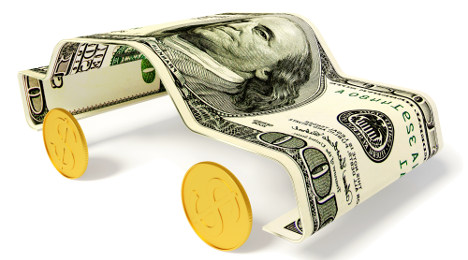Risks from subprime? ‘Likely overstated’

By subscribing, you agree to receive communications from Auto Remarketing and our partners in accordance with our Privacy Policy. We may share your information with select partners and sponsors who may contact you about their products and services. You may unsubscribe at any time.
CARY, N.C. –
There is, admittedly, some “unease” about the health of the new-vehicle market in 2017, Scotiabank said in an analysis.
Along with somewhat disappointing third-quarter earnings from an automaker, increases in repossessions and subprime auto finance delinquencies have spurred this concern in recent weeks, the company said.
But it may be misplaced, some argue.
“We believe these developments are a reflection of the increase in number of vehicles being financed, and not a sign of weakening demand,” Scotiabank senior economist and auto industry specialist Carlos Gomes said in a news release.
“We maintain our view that replacement of an aging fleet combined with rising incomes and improving household balance sheets are likely to lift U.S. new vehicle sales to new heights in 2016 and 2017,” he said.
And the fears of risks from the subprime auto finance market may be misplaced, as well.
Subscribe to Auto Remarketing to stay informed and stay ahead.
By subscribing, you agree to receive communications from Auto Remarketing and our partners in accordance with our Privacy Policy. We may share your information with select partners and sponsors who may contact you about their products and services. You may unsubscribe at any time.
Experian’s State of the Automotive Finance Market indicates that subprime auto loans were down 4.5 percent year-over-year in the third quarter, with deep-subprime loans falling 2.8 percent. The latter was at a five-year low.
Meanwhile, prime buyers represented close to 60 percent of auto loans for the quarter and the volume of these loans to these buyers was up 2 percent.
“For anyone making doomsday predictions about a subprime bubble in the auto industry, Q3 2016 provides a stark reality check,” Melinda Zabritski, Experian’s senior director of automotive finance, said in a news release. “This quarter’s report shows that lenders are reducing the percentage of loans to the subprime and deep-subprime risk tiers while increasing the percentage to consumers with good credit.
“The most important takeaway here is to understand the market reality and not to be led astray by rumors or unsubstantiated facts. By doing so, lenders, dealers and consumers are able to make smarter decisions and more easily explore financing programs and other opportunities available to them.”
Financing gains ground
As Gomes alluded to, financing is becoming a bigger part of the auto sales process.
Consider this: Combined new- and used-car sales are up 2 percent year-to-date and should end up beating the 57 million full-year sales last year, according to Scotiabank. But that trails the 60 million annual sales typical for 2001 through 2006. And the average of 54 million-plus during the current economic expansion is about 8 percent softer than the prior decade’s annual sum.
But the overall market is now leaning more heavily toward new than it has in the past. Used vehicles have accounted less than 70 percent of total sales the past two years, down from a 77-percent peak in 2008 and 2009.
“This trend has been accompanied by increased vehicle financing and has been facilitated by improving credit availability,” Scotiabank said the report.
And finance is gaining a bigger foothold in both new- and used-car sales.
The report points to Experian data indicating that the portion of new cars that are financed is now more than 86 percent, compared to below 80 percent just nine years ago.
Meanwhile, 56 percent of used cars are financed, up from 50 percent.
All told, two-thirds of car purchases involve financing. A decade ago, it wasn’t even 60 percent.
Scotiabank forecasts that 38 million vehicles will be financed this year, versus 34 million in 2007.
Look at overall health
With more vehicles being financed, it’s natural that repossessions and delinquencies would increase.
“Given the growth in automotive lending, there should not be a surprise that the number of repossessed vehicles and delinquencies are on the rise,” Scotiabank argues. “However, the key metric that analysts and commentators should focus on to gauge the health of the industry is not the absolute level of repossessions or delinquencies, but the trend of the overall loan portfolio.”
And that, the company suggests, is a relatively one, with credit quality strong.
A chart in the report citing company reports and Scotiabank Economics show that repossessions are in the neighborhood of 1 percent of total loans, versus upwards of 3 percent-plus near the recessionary years.
Meanwhile, delinquencies of 90 days or longer are less than 1.5 percent, versus rates higher than 2 percent in recessionary years.
And while subprime delinquencies have increased as of late, the comparison to the housing market implosion is perhaps not an apt one
For starters, auto loans aren’t a large portion of overall household debt. Just 9 percent, in fact, versus the 74 percent mortgages commanded before the crisis, Scotiabank said.
And subprime car loans have an even smaller slice of the pie.
“In addition, subprime auto loans represent only 2.5 percent of overall household debt, pointing to only a limited negative impact on overall household credit quality,” Scotiabank said.
“In fact, lenders have already been scaling back subprime auto loans since mid-2015, and much of the lending growth has been in the prime and super prime categories over the past year,” it continued. “This suggests that the possible risks emanating from subprime auto loans are likely overstated.”


